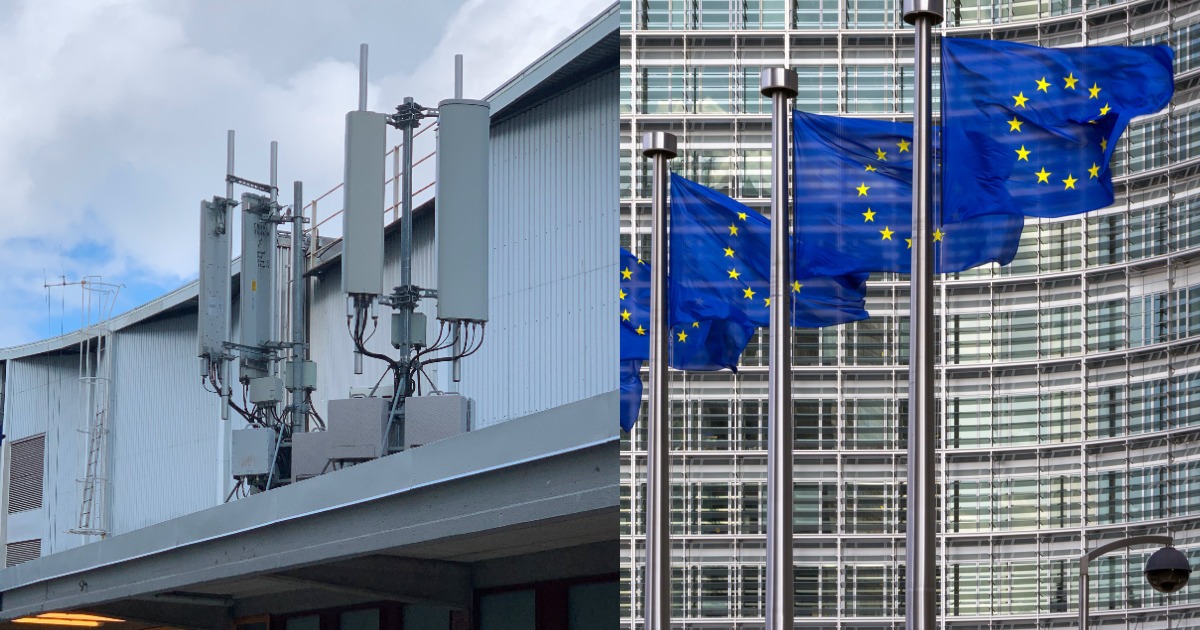The EU Commission selected biased experts for radiation report
Serious criticism has emerged from an in-depth review of the European Commission’s latest expert report on the health risks of the radiation emitted by wireless technologies. The EU experts are biased and the report seems to be predetermined to dismiss health risks and give the go-ahead to adopt the new ICNIRP limits from 2020. These values allow radiation at levels that have been shown to cause harmful health and environmental effects, but they are also beneficial and of great importance to the telecommunications industry.
In August 2022, the European Commission released a SCHEER Opinion draft report on the potential risks of exposure to microwave radiation, also known as radio frequency radiation (RFR), emitted by 5G, 4G, mobile phones, Wi-Fi, etc. The report recommended the adoption of the ICNIRP 2020 limits which, if adopted, will allow even more harmful levels of radiation. The ICNIRP limits only protect against acute warming effects of the radiation, which occur when the radiation is so intense that it causes a temperature increase of one degree Celsius within 1 hour. The ICNIRP values do not protect against any long-term or short-term non-heating effects.
ICNIRP limits important to the industry
Lower limits than those recommended by ICNIRP are considered to have a negative impact on the telecommunications industry. It will be difficult or impossible to deploy 5G if 100 times lower limits are applied, according to Ericsson, the Swedish world-leading supplier of 5G infrastructure equipment. However, medical and scientific experts in the field are calling for even lower limits to protect against documented adverse health effects from chronic exposure.
Commission’s habit of selecting biased experts
The critical review report, prepared by the Danish Council for Safe Telecommunications and the Swedish Radiation Protection Foundation, shows that for 15 years the European Commission has selected only experts that have a positive attitude to the ICNIRP limits, while not once inviting a single representative from the hundreds of scientists who conclude there is a large body of scientific evidence of health effects below the ICNIRP limits. Half of the eight members of the SCHEER working group are not experts in the field, while the other four experts belong to a small self-referential circle of people who have previously advocated the ICNIRP limits and who also have links to the telecoms companies. Furthermore, these four experts have a tendency to cross-refer to other members of a closed circle of experts who advocate ICNIRP limits.
Another clear sign of bias is that experts consistently fabricate doubts about the scientific evidence of adverse effects below the ICNIRP limits, while accepting studies that do not report adverse effects without relevant criticism.
A majority of field scientists disagree
258 scientists (EMF-Scientist) jointly call for lower limits due to the increasing evidence of harmful effects well below the ICNIRP limits. In addition, a group of 16 world-leading scientists (ICBE-EMF) concluded in October 2022 that the ICNIRP limits are based on incorrect and outdated assumptions, do not protect against known harmful effects and are therefore detrimental to public health.
It has been documented that many effects occur below the ICNIRP limits, but they are downplayed in the EU’s biased expert opinion. These include adverse effects on the brain and the nervous system, behavioural effects, symptoms such as headaches, dizziness and sleep disturbances, DNA damage, oxidative stress, harmful effects on sperm and increased risk of cancer. Oxidative stress alone has been demonstrated in more than 200 scientific studies.
There is also ample evidence of serious effects on flora and fauna, especially on plants and insects, with potentially devastating effects on biodiversity and the ecosystem. SCHEER fails to point out the need for a revision of the limit values to include the protection of flora and fauna. The effects on birds and insects, for example, are completely ignored in the SCHEER opinion, despite the fact that the scientific evidence today supports that this form of radiation is likely to contribute to the biodiversity crisis.
Harmful to human health
The Council for Safe Telecommunications and the Radiation Protection Foundation conclude that the favourable approach to ICNIRP limits is beneficial to industry but harmful to human health and the environment. If ICNIRP 2020 is adopted in Europe, exposure levels well above those known to cause harmful effects will be allowed. On the other hand, there is no scientific evidence that chronic whole-body exposure of humans to 5G and/or 4G base station radiation at the levels proposed by ICNIRP 2020 does not cause disease in humans and does not harm the environment.
The European Commission’s expert report SCHEER violates the principles of risk assessment as the experts have conflicts of interest. Consequently, the report is extremely biased in favour of telecom companies and cannot be used as a basis for decisions on new exposure limits to prevent adverse health and environmental effects. The report should be rejected and a new objective scientific evaluation of the health and environmental risks of radiation from wireless communications must be carried out by competent experts with no conflicts of interest and no ties to industry.
The two organizations propose that the European Environment Agency (EEA) set up an expert group, free from economic and political interests, to conduct an objective scientific risk assessment of the risks to human health and the environment.
References:
Critique of SCHEER Opinion Report on Health Risks from Radiofrequency Radiation. A review of the EU expert group and opinion of August 2022 on the need of a revision of the maximum exposure limits for radiation from wireless communications, 2nd edition. March 31, The Council for Safe Telecommunications (Denmark) and The Swedish Radiation Protection Foundation. (Pdf)
Summary of Critique of SCHEER Opinion Report on Health Risks from Radiofrequency Radiation. A review of the EU expert group and opinion of August 2022 on the need of a revision of the maximum exposure limits for radiation from wireless communications, 2nd edition. March 31, The Council for Safe Telecommunications (Denmark) and The Swedish Radiation Protection Foundation. (Pdf)
European Commission: Scientific Committee on Health, Environmental and Emerging Risks SCHEER Opinion on the need of a revision of the annexes in the Council Recommendation 1999/519/EC and Directive 2013/35/EU, in view of the latest scientific evidence available with regard to radiofrequency (100kHz – 300GHz) (pdf)
Originally published on Radiation Protection
Suggest a correction







